We analyzed 986 shortlisted images in the Astronomy Photographer of the Year competition in the past 7 years to find the Best Mirrorless Cameras for Astrophotography.
See below for quick links or read on for further analysis of the best models and all the information you need relating to astrophotography with mirrorless cameras.
|
Make & Model:
Sony A7 III
|
Make & Model:
Sony A7R V
|
Make & Model:
Nikon Z6 III
|
Make & Model:
Canon EOS R8
|
|
Type:
Mirrorless
|
Type:
Mirrorless
|
Type:
Mirrorless
|
Type:
Mirrorless
|
|
Sensor type:
Full-frame
|
Sensor type:
Full-frame
|
Sensor type:
Full-frame
|
Sensor type:
Full-frame
|
|
Sensor size:
24.2 MP
|
Sensor size:
61 MP
|
Sensor size:
24.5 MP
|
Sensor size:
24.2 MP
|
Best Mirrorless Cameras for Astrophotography
In 2025, our top pick is the Sony A7 III:
Full-Frame Mirrorless Interchangeable Lens Camera
- No.1 Camera in Astronomy Photographer of the Year 2024
- Light Weight, High-Quality
- 24.2 Megapixel Resolution
- Sony UX can be hard to master
Our results show that this was the most successfully used mirrorless camera in the Astronomy Photographer of the Year competition in the last seven years.
It has all the key attributes you want for landscape astrophotography:
- Interchangeable-lens capability
- Full manual control of settings
- Full-frame sensor
- High resolution
It is the perfect balance for many given it is cheaper than other top Sony mirrorless models, yet our results show that it is a proven performer for astrophotography.
See the image below for an example of what you can achieve with the Sony A7 III:
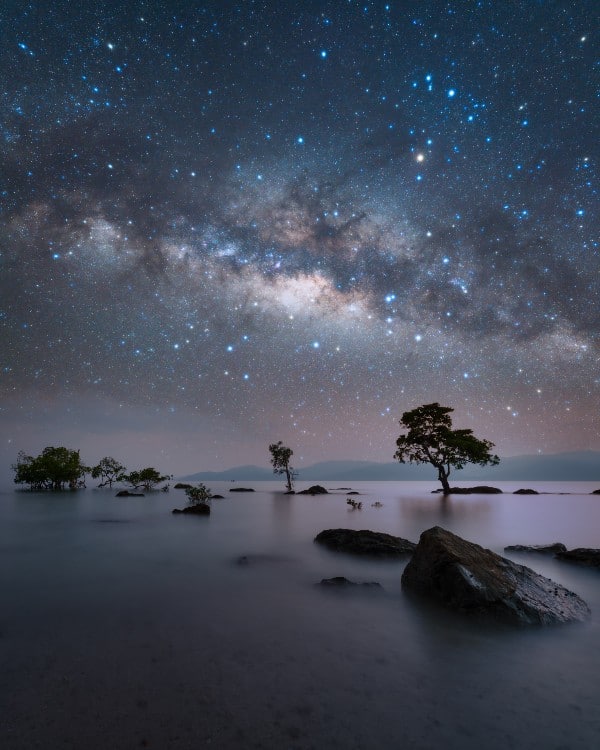
Our budget pick is the Canon EOS R8:
Full-Frame Mirrorless Hybrid Camera
- 24.2 Megapixel CMOS Image Sensor
- Light weight
- Affordable price
This is probably the cheapest full frame mirrorless camera available to buy right now.
It is also smaller and lighter than most other options but still boasts all the key characteristics we are looking for in a landscape astrophotography camera and has a 24-megapixel resolution.
Our upgrade pick is the professional-level Sony A7R V:
Full-Frame Mirrorless Interchangeable Lens Camera
- Top Sony model
- 61.0 MP full-frame sensor
- High performing for astrophotography
- Premium Price
This top-of-the-range Sony mirrorless model boasts an extremely high 61 MP resolution for great detail in images – the “R” in the name refers to “resolution”.
If you want the top-spec option and have the budget, then this may be the pick for you.
Finally, our top Nikon pick and brand new on the market in 2024 is the Nikon Z6 III:
FX-Format Mirrorless Camera
- Brand new in 2024
- The latest and greatest version in Nikon's Z6 series
- Starlight View mode to aid focusing and composition for night sky photography
- 24.5 MP full-frame sensor
- Fairly expensive
- Lower resolution than the Z7 II
The Z6 III is the tweaked upgrade to the Z6 II that has been one of the most successful astrophototgraphy cameras in the past few years.
We are recommending the Z6 III here – even though it is too new to show up in the competition data – because it takes all that has been great about the previous model but also adds new features like StarLight Mode, that specifically aids focusing and composition for night sky photography.
Mirrorless for Astrophotography: Data Analysis
We analyzed all 986 images shortlisted for the Astronomy Photographer of the Year competition for the past seven years (2018 to 2024) to see what cameras were used.
Of these 986 images, 186 were taken with mirrorless cameras and that forms the basis of our results here.
We will now use this to look at the best models, the most successful brands, and how mirrorless and DSLRs cameras compare for astrophotography.
The Best Mirrorless Cameras for Astrophotography
Looking at models, there have been 35 different mirrorless cameras used in the past seven years of the astrophotography competition.
Here’s the top ten:
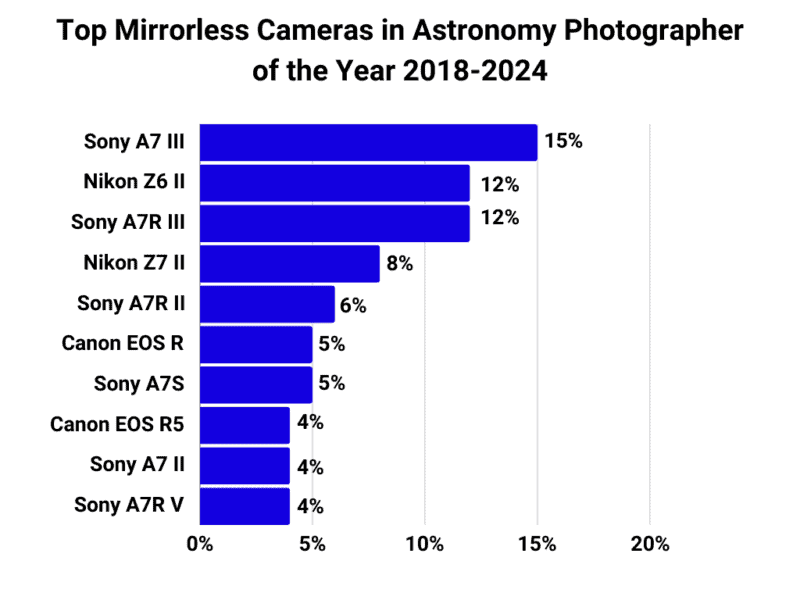
We can see that Sony models make up six of the top ten, with the Sony A7 III top.
If we narrow the data to just the last two years (2023-2024), then these are the top mirrorless models:
- Nikon Z6 II – 13%
- Sony A7 III – 12%
- Nikon Z7 II – 12%
- Sony A7R V – 8%
- Sony A7R III – 7%
- Canon EOS R – 6%
- Canon EOS R5 – 6%
- Sony A7S III – 6%
Using this information we can identify the common characteristics of these models. We can see that they all have:
- Full Frame Sensors: They virtually all have full frame sensors, as opposed to APS-C crop sensors. This is because full frame sensors allow you to capture a wider expanse of the sky for landscape astrophotography and they are better in general at capturing light in low light conditions. (Note: APS-C sensor cameras can have some advantages for deep sky astrophotography with a telescope.)
- High Megapixels: Generally at least 24MP megapixels. You don’t necessarily need a super high resolution, but it does need to be high enough to allow you to get the detail you want in your astrophotography images, especially if you want to blow them up and print them.
- Interchangeable Lens Mounts: They are all cameras that can have different lenses fitted, as opposed to compact cameras or bridge cameras that have a lens built-in. This is because they need to be able to have the right lenses attached for the shot being taken.
You can see this if we compare these key characteristics of the top ten models below:
| Model | Sensor Size | Megapixels |
|---|---|---|
| Sony A7 III | Full Frame | 24.2 MP |
| Nikon Z6 II | Full Frame | 24.5 MP |
| Sony A7R III | Full Frame | 42.4 MP |
| Nikon Z7 II | Full Frame | 45.7 MP |
| Sony A7R II | Full Frame | 42.4 MP |
| Canon EOS R | Full Frame | 30.3 MP |
| Sony A7S | Full Frame | 12.2 MP |
| Canon EOS R5 | Full Frame | 45 MP |
| Sony A7 II | Full Frame | 24.3 MP |
| Sony A7R V | Full Frame | 61 MP |
Mirrorless Astrophotography Brands: Sony vs Nikon vs Canon
Looking now at which brands/manufacturers are the most successful, we can see that Sony is way out in front of the competitors in terms of mirrorless models:
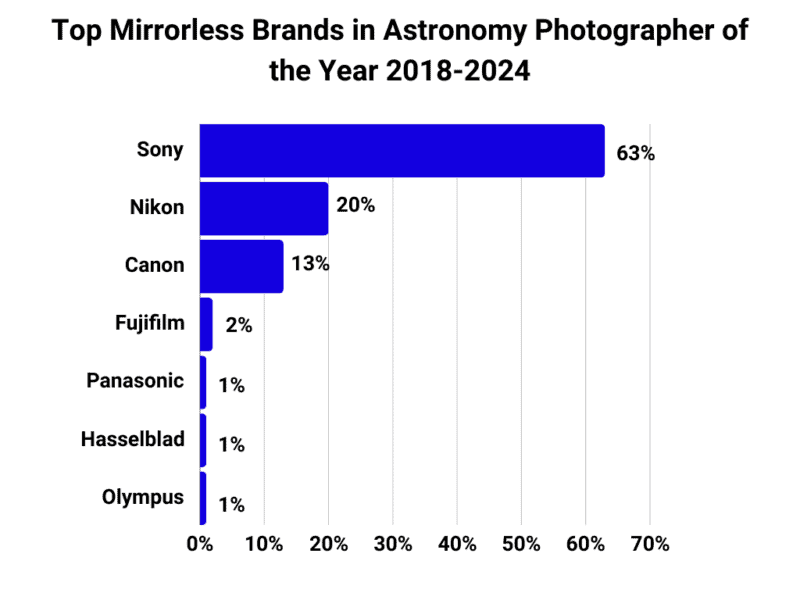
Even though Sony’s mirrorless cameras are excellent, this also likely reflects the company getting a headstart in the mirrorless game over Nikon and Canon, who were slower to start producing mirrorless models when they were dominating the DSLR market.
In fact, if we look at the data for just the last two years we can see that although Sony are still way out in front, Nikon and Canon have closed up:
- Sony – 51%
- Nikon – 27%
- Canon – 20%
- Fujifilm – 2%
Mirrorless Cameras and Astrophotography
Finally, it is worth noting that 2022 was the year that mirrorless cameras became more commonly used than DSLRs in the competition and this has continued in the years since.
You can see a clear trend in this year-by-year chart below:
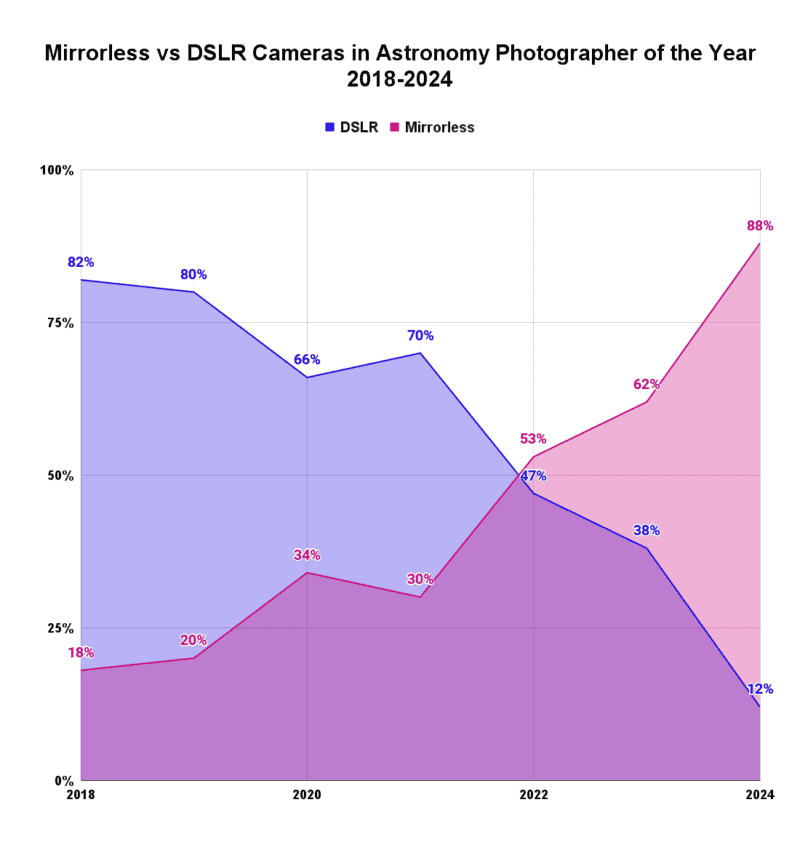
This alone should quash any doubts about whether you can use a mirrorless camera for astrophotography as this is evidence they are being used successfully to produce some of the best images in the world right now.
Also, this trend of moving from DSLRs to mirrorless is evident in the wider photography world and this shows how it is happening in astrophotography as well now.
Now let’s look in detail at the top mirrorless models that we recommend for astrophotography.
Sony A7 III
Top Pick – Best Value
As you can see in our results above, the Sony A7 III was the most successful mirrorless camera for astrophotography overall.
Whilst not many would consider this “budget”, it does retail for cheaper than the A7R V and the A7S III, making it possibly the best option for many when looking for a Sony mirrorless camera for astrophotography.
It boasts 24 megapixels, which falls into what many consider the perfect range for a camera for astrophotography since it provides sufficient detail without the drawbacks of having higher MP which can degrade low light images and cause challenges with the file sizes.
Overall, this is the perfect option for those that cannot stretch to the higher resolution A7R V below, or simply prefer the lower megapixel count for ease of use and potentially improved low-light performance.
One thing to note is that the Sony A7 IV was released in late-2021 as the latest in the A7 range.
Key specifications
- Camera Type: Mirrorless
- Sensor Size: Full Frame
- Megapixels: 24.2MP
- ISO: 50 to 204,800
- Weight: 1.4 lbs (0.7 KG)
Sony A7R V
Premium Pick
The Sony A7R V is from the A7R range that boasts the highest resolution (megapixels) of any Sony mirrorless camera. In fact, the “R” in the name refers to “resolution”.
In our results above, the A7R IV is the fourth most successful mirrorless for astrophotography despite being relatively new and expensive.
The A7R V is the top-of-the-range Sony mirrorless model with the highest resolution.
Overall, this makes a great option if you want the very best and have the money to spend to get the top of the range.
Key specifications
- Camera Type: Mirrorless
- Sensor Size: Full Frame
- Megapixels: 61MP
- ISO: 50 to 102,400
- Weight: 1.5 lbs (0.7 KG)
Sony A7 Astrophotography
In our findings, six of the top ten mirrorless cameras for astrophotography are from the Sony A7 range (or Alpha 7).
Obviously, this is a good indicator that this range of cameras can produce excellent results for astrophotography, but what are the differences between these models and what is best?
The models within these ranges have confusingly similar names which can be hard to get your head around at first. In addition, they are also sometimes referred to with different model names (e.g. ILCE-7M4 instead of A7 IV). These are all listed in the table below to help you.
What they all have in common is that they are all full-frame mirrorless interchangeable-lens cameras with the Sony E mount for lenses.
But there are four families within this Sony A7 range with naming conventions relating to their key characteristics:
- A7 – the original
- A7R – “R” for resolution, relating to its high megapixels
- A7S – “S” for sensitivity, relating to increased sensitivity for low light videography
- A7C – “C” for compact, relating to its physical size
You can compare the key specifications of all the A7 cameras in the chart below.
| Model Name | Model No. | Megapixels | Year of release |
|---|---|---|---|
| Sony A7R | ILCE-7R | 36 MP | 2014 |
| Sony A7R II | ILCE-7RM2 | 42 MP | 2015 |
| Sony A7R III | ILCE-7RM3 | 42 MP | 2017 |
| Sony A7R IV | ILCE-7RM4 | 61 MP | 2019 |
| Sony A7R V | ILCE-7RM5 | 61 MP | 2022 |
| Sony A7 | ILCE-7 | 24 MP | 2014 |
| Sony A7 II | ILCE-7M2 | 24 MP | 2014 |
| Sony A7 III | ILCE-7M3 | 24 MP | 2018 |
| Sony A7 IV | ILCE-7M4 | 33 MP | 2021 |
| Sony A7S | ILCE-7S | 12 MP | 2014 |
| Sony A7S II | ILCE-7SM2 | 12 MP | 2015 |
| Sony A7S III | ILCE-7SM3 | 12 MP | 2020 |
| Sony A7C | ILCE-7C | 24 MP | 2020 |
Sony A7R IV vs Sony A7 IV vs Sony A7S III for Astrophotography
All of these cameras can be used for astrophotography, but the core differences you might want to consider are:
- The A7S cameras have the lowest resolution. Whilst 12MP is certainly not small, you may sacrifice some fine detail in astrophotography images versus models with 20MP+. The increased sensitivity does make them perfect for low light videography, with the Sony A7S III the latest model.
- The A7 range provides a great mid-point. They have a perfect megapixel count and are cheaper than the A7R or A7S range. The Sony A7 IV is the most recent of any of the Sony Alpha cameras having been released in 2021.
- The A7R cameras have the highest resolution and are marketed as professional level. The Sony A7R V is the most up-to-date and boasts a whopping 61MP.
- The A7C is Sony’s smallest and lightest full frame mirrorless camera. It’s relatively cheap compared to the other ranges but is targeted at beginners and lacks some of the advanced features of the other models. The Sony A7C is the first and only model in this family and was released in 2020.
What’s the best budget Sony mirrorless for astrophotography?
If you are looking for the cheapest Sony full frame mirrorless for astrophotography then your options are:
- Sony A7 IV – not cheap, but the cheapest of the other new advanced models
- Sony A7C – lacking some advanced functionality but still a full frame mirrorless and most will love the small size and light weight
However, within each of the families of cameras, you can think about whether you need the newest models or are happy with earlier versions that you can pick up for cheaper or perhaps pre-used.
The advantage of this is obviously that you save money and that our findings show the older A7, A7R, and A7S models are proven for astrophotography.
If you click the links for these cameras in the table above you should be able to check the availability and prices from various retailers.
Nikon Z6 III
Best Nikon Mirrorless Camera for Astrophotography
The Nikon Z6 III hits the perfect balance for most looking for a mirrorless astrophotography camera.
It has a full frame sensor with 26 megapixels.
As you can see in our data of the most successful astrophotography mirrorless models above, the Nikon Z6 II was top in the last two years.
The Z6 II was a 2020 upgrade to the original version that fixed a number of practical issues that people had with the first camera.
It has the same sensor but among the upgrades there are two features that are particularly good for astrophotography:
- The Z6 II allows you to take long exposures of up to 15 minutes without using an external intervalometer, whereas the original Z6 has this capped at 30 seconds, which is quite limiting for long exposure photography in low light.
- When you turn the Z6 II off and back on again it remembers your last focus settings. This is great if you are using it mostly for astrophotography and want to be able to pick up where you left off on a previous night.
The Z6 III further builds on this with a number of features.
Most relevent for astrophotography is the StarLight View Mode, which gives you a brightened preview image on the live view screen under dark skies. This helps focusing and composition.
Key specifications
- Camera Type: Mirrorless
- Sensor Size: Full Frame
- Megapixels: 24.5MP
- ISO: 100 to 204,800
- Weight: 1.4 lbs (0.6 KG)
Nikon Mirrorless Astrophotography
There are 8 Nikon mirrorless models available, you can see the key differentiating characteristics here:
| Model | Sensor | Megapixels | Year of release |
|---|---|---|---|
| Nikon Z5 | Full frame | 24.3 MP | 2020 |
| Nikon Z6 | Full frame | 24.5 MP | 2018 |
| Nikon Z6 II | Full frame | 24.5 MP | 2020 |
| Nikon Z6 III | Full frame | 24.5 MP | 2024 |
| Nikon Z7 | Full frame | 45.7 MP | 2018 |
| Nikon Z7 II | Full frame | 45.7 MP | 2020 |
| Nikon Z9 | Full frame | 45.7 MP | 2021 |
| Nikon Z50 | APS-C | 20.9 MP | 2019 |
| Nikon ZFC | APS-C | 20.9 MP | 2021 |
The “Z” in the names of these cameras refers to the Z mount that features on Nikon’s interchangeable lens mirrorless cameras.
The model specifications will also state either “FX” or “DX”, where FX denotes a full frame sensor and DX denotes an APS-C sensor.
Nikon Z6 III vs Z7 II for Astrophotography
The main challenger to the Z6 III is the Nikon Z7 II which is also brilliant for astrophotography and has a much higher resolution at 45.7 megapixels.
The only real downside is the additional cost. You can check live prices and availability by clicking the buttons on this page but the Z6 III is generally a fair bit cheaper than the Z7 II.
If you have the budget and want the higher megapixel count, then the Z7 II will be for you. It is essentially the mirrorless version of Nikon’s premium D850 DSLR which has been one of the most popular cameras for astrophotography in recent years.
But the Z6 III will be more affordable for most and is sufficiently advanced so that many are having great success with it as a mirrorless astrophotography camera.
Nikon Z5 Astrophotography
The Nikon Z5 is a great option if you don’t have the budget for the Z6II but want a brand new full frame mirrorless model from Nikon.
The main features that it lacks compared to the Z6 are related to video and so for astrophotography there are relatively few hindrances.
Nikon Z50 Astrophotography
The Nikon Z50 has an APS-C crop sensor. These are slightly less optimal for wide-field landscape astrophotography when compared to the full frame models.
However, this can be an advantage for deep sky or planetary imaging with a telescope or long focal length lens where you want to have a narrower field of view.
This is also the cheapest Nikon mirrorless model and is excellent value for the price it retails at.
Nikon Zfc Astrophotography
The Nikon Zfc is a retro style crop sensor camera. You could certainly use it for astrophotography but it has little in its favor over the Z50 which is cheaper.
Nikon Z9 Astrophotography
The Nikon Z9 is a beast of a camera that comes at a high price and is probably overkill for astrophotography.
It is much like the Z7 II above with high resolution, but it also comes with improved 8k video performance. If you plan on doing videography, and have the budget, then the Z9 might be for you.
However, with regards to astrophotography then you might as well stay with the Z7II for the same megapixel rate and save some money.
Canon EOS R8
Budget Pick
The Canon EOS R8 is a brilliant, budget full frame mirrorless camera.
With 24 megapixels, it is sufficiently high-spec to perform for astrophotography yet it is available for a price that puts it within the reach of many casual photographers and astrophotographers.
It is also extremely small and light and so makes a great option as an all round camera for all types of photography.
Overall, this is a great value full frame mirrorless that anyone should consider in comparison to the more expensive competition.
Key specifications
- Camera Type: Mirrorless
- Sensor Size: Full Frame
- Megapixels: 24.2 MP
- ISO: 50 to 102,400
- Weight: 0.9 lbs (0.4 KG)
FAQs: Best Mirrorless Camera for Astrophotography
Are mirrorless cameras good for astrophotography?
Yes, mirrorless cameras are good for astrophotography and are equally as good as DSLRs.
There are even some advantages to using a mirrorless camera for astrophotography – for example, the live view image is much brighter when shooting in the dark.
This helps visualize your shot before taking (and processing) it.
You can read more about the pros and cons of each in DSLR vs Mirrorless Cameras for Astrophotography.
What kind of sensor is best for astrophotography?
A full frame sensor camera is best for landscape astrophotography.
See Full Frame vs APS-C: What’s Best for Astrophotography?
How many megapixels do you need for astrophotography?
Looking at astrophotography competition data, we found that the average megapixel count of the cameras used was around 28.6MP, but that 20MP to 30MP could be seen as optimal.
See How Many Megapixels Do You Need for Astrophotography?
How do you shoot a Milky Way with a mirrorless camera?
You need to do some planning with regards to timing and location and then shoot a long exposure photo to ensure you collect enough light in the dark sky conditions.
See How to Photograph the Milky Way.
Conclusion: Which mirrorless camera is good for astrophotography?
There are a great number of interchangeable lens mirrorless cameras that have come into the market in recent years from Canon and Nikon which now rival the dominance and excellence of Sony.
Overall, when looking at what is available we recommend:
- Sony A7 III if you want a proven Sony mirrorless at a mid-range price (or the Sony A7 IV if you want the latest version)
- Sony A7R V if you want super high resolution and have the budget
- Nikon Z6 III if you want a great value Nikon mirrorless
- Canon EOS R8 if you want a Canon and a great budget full-frame mirrorless
Please let us know if you have any comments or questions below.


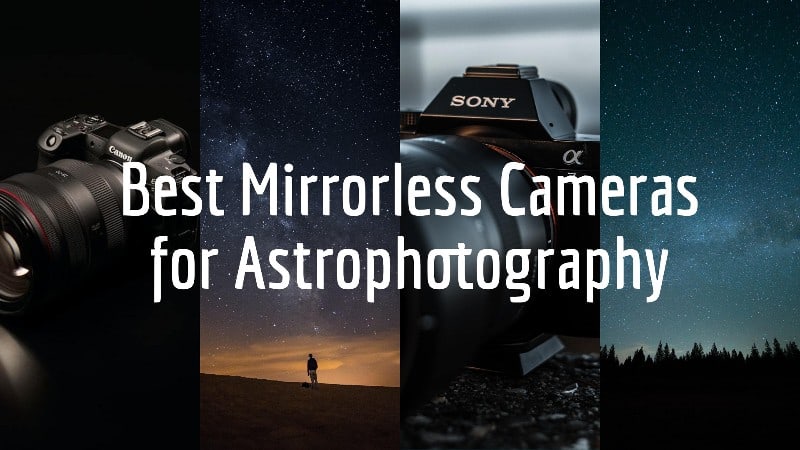
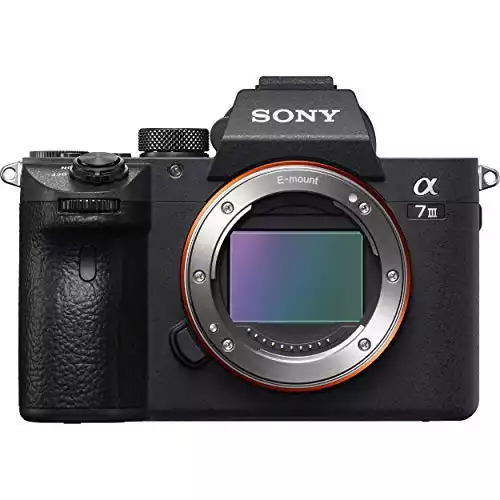
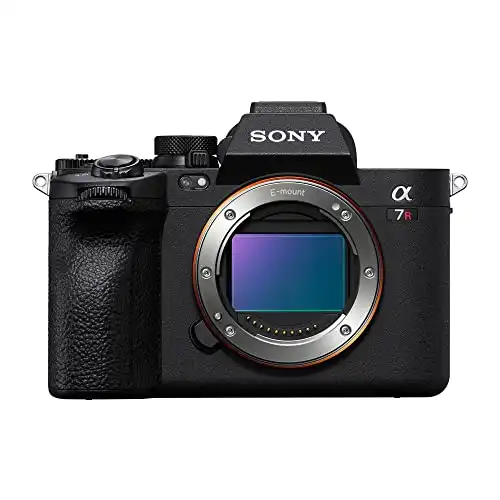
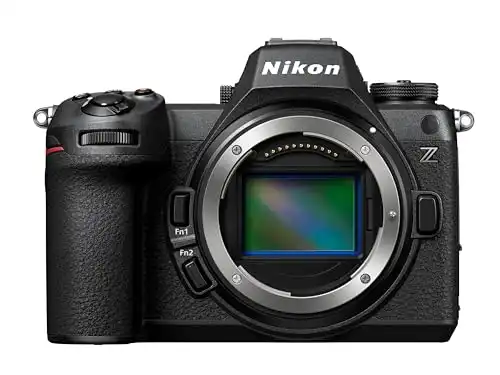
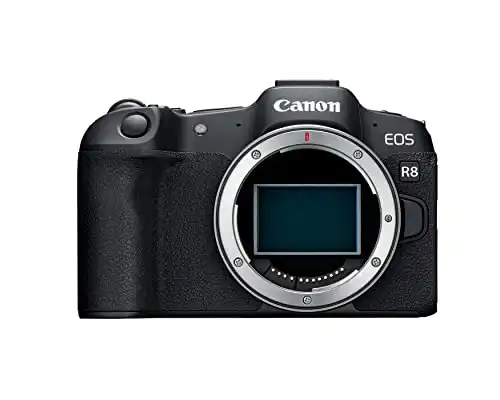





I am currently looking for my 1st full frame mirrorless camera, the A7III is high on my list , also the A7IV. Very interested to see them top of your astro listing. Thanks for the informative facts of proven usability of these cameras, also the Nikon Z6II is up on my list, just spoilt for choice, don`t know which one to buy.